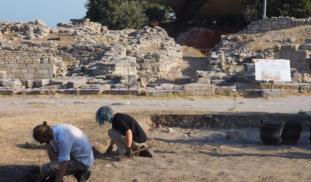Please wait...
About This Project
Ancient Troy has been the subject of archaeological research for a very long time: systematic excavations have been conducted at the site since 1863. This makes Troy exceptionally suited to study the development of archaeological field practice. Each team excavating at Troy did so with their own methodologies and techniques. We want to know the effect of these changes on interpretations about the site.






